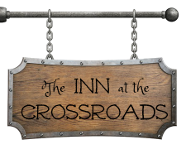
Hand-washing Water
There is a curious medieval custom that evolved through the ages of having scented water on dining tables with which to wash one’s hands. I remember as a child being delighted that my grandmother had china finger-bowls, even though they were never used. Although this doesn’t make an obvious appearance in Song of Ice and Fire, I imagine that it would fit very well with the more well-heeled families. The Lannisters would use expensive ingredients such as ambergris, while the Tyrells might use rose petals, the Starks juniper and spruce tips, and so on.
The basic version is a fun, easy recipe to make, and adds a fun upscale element to a dinner party! It makes enough for two small bowls, and is a pale green-yellow color with the slightest of pleasant herbal and citrus elements.
Recipes for Hand Washing Waters
TO MAKE WATER TO WASH THE HANDS AT TABLE. Boil sage, then strain the water, and let cool until it is luke-warm. Or instead you can use camomile or marjoram, or rosemary : and cook with the peel of an orange. And also laurel leaves [bay leaves] are good for this. –Le Menagier de Paris, 1393
Ingredients:
- 2 cups water
- 1/2 cup fresh sage, chamomile, marjoram, rosemary, bay leaves, etc.
- 1 heaping Tbs. orange peel
Here’s another later recipe that calls for distilling the liquid, which is a different approach as it seems to make a kind of concentrate for scenting water; I particularly like the quirky pairing of lavender and cloves:
This is an excerpt from Delights for Ladies (England, 1609)
An excellent hand water or washing water very cheape. Take a gallon of faire water, one handfull of Lavender flowers, a few Cloves and some Orace powder, and foure ounces of Benjamin: distill the water in an ordinarie leaden Still. You may distill a second water by a new infusion of water upon the seces: a little of this will sweeten a bason of faire water for your table.













